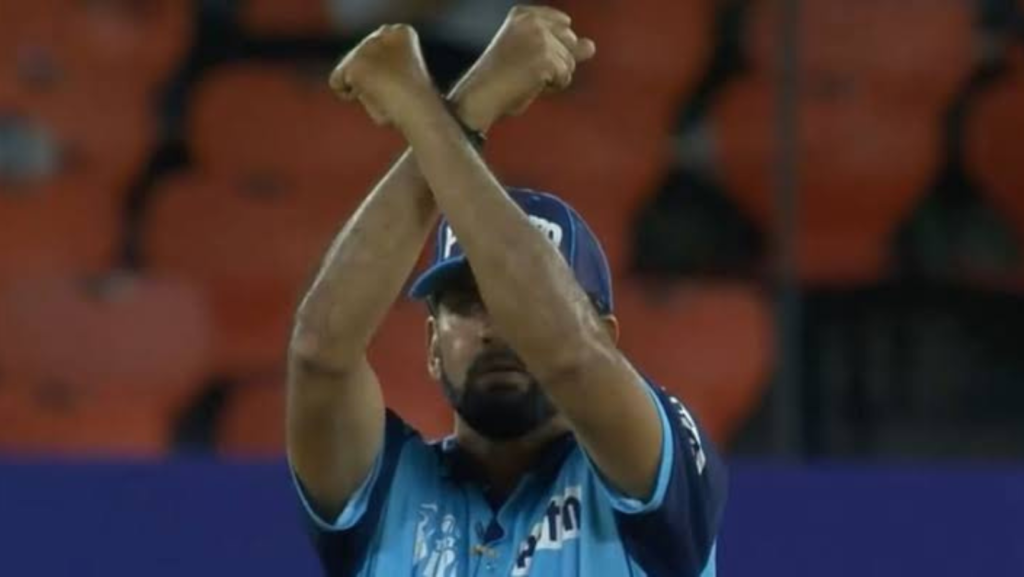
G Rajaraman
“Wait a minute, it must be a mistake!” we told ourselves when we saw Lucknow Super Giants send in Krishnappa Gowtham as an Impact Player substitute for Ayush Badoni, who had just been dismissed, in their Indian Premier League (IPL) game against Delhi Capitals. We knew of the new rule, but when it happened it did make some of us sit up with a start on Saturday night.
The sight of a batter who has been dismissed being replaced so that the ‘Impact Player’ can take his turn at the crease, or the thought of a bowler who has completed his quota of overs being replaced by another who can also deliver four overs is against the grain of the game as we have understood it until now.
The IPL’s eagerness to be at the forefront of innovation made it introduce the Impact Player this season. The IPL Impact Player regulations reveal that it has drawn from other team sports, which allow tactical substitution of players during a match. It has named football, rugby, basketball and baseball as sports that allow substitutes to perform or participate like any other regular player.
It may not make sense to compare cricket with these disciplines since they do not have the equivalent of a batsman’s dismissal, or the restriction of a bowler’s quota. Does football permit a player who has been shown a red card to be substituted? Of course, basketball allows five players to be on court even if a player from a team has been sent out with five fouls against his or her name.
As of today, Law 1.2.3 in the Laws of Cricket specifies that a replacement shall not bat in an innings in which the nominated player he/she is replacing has completed his/her innings. Of course, the IPL has invoked its right to implement a set of Playing Conditions that it has drawn up, to spice up the game and introduce innovation.
The International Cricket Council tried a Super Sub concept from July 2005 and gave it up inside a year. Back then, teams had to name their choice of Super Sub before the toss. And they quickly found that it was lopsided rule in favour of teams winning the toss. They had a greater chance of using the Super Sub than the other side.
More recently, the ICC allowed concussion substitutes to play an active part in a match as batter or bowler. That decision was conceived with the safety of cricketers in mind and based on logic. It also demands that teams make a like-for-like replacement to eliminate the risks involved when a player who has suffered a concussion plays on.
Truth be told, even in the 19th Century, there were cases of substitutes being allowed to bat after a bowler was injured and retired early in a match. That was because the Laws allowed the captains to agree to making such changes to the team nomination. The 1980 Code of the Laws of Cricket said: “Before the toss for innings, the Captain shall nominate his players who may not thereafter be changed without the consent of the opposing Captain.”
Back in 1951, renowned scorer Roy Webber listed four such instances in The Playfair Book of Cricket Records. England all-rounder Syd Barnes is the most famous name featuring in that short list as one who was replaced by John Brougton in May 1902. It transpires that Barnes went off the field with an injury after bowling 2.5 overs in Lancashire’s match against MCC at Lord’s.
It is not only the old-fashioned guardians, self-appointed, some will say, who will be challenged in understanding the rule change, but also contemporary cricketers. For, the Impact Player ‘innovation’ means that matches are contests between a XII and another XII rather than featuring sides that have traditionally been called XIs.
Since ignoring the tournament itself seems a highly improbable idea, cricket fans, young and old, have no option but to live with the realisation that the grammar of the game is changing. So what if the authors of the original Laws of Cricket had spelt it out that umpires were not to allow a fresh Man to Play on either side on any account?
Let’s enjoy the power of imagination a bit more. If this rule were available to all captains in the past, India’s famed spin quartet may have played a lot more Tests together than just the one in 1967. Javagal Srinath would have played more home Tests early in his career rather than warming the bench as a mere reserve. And who knows, R Ashwin could have had more caps and scalps under his belt!
Trending
- IPL 2026: Ravi Bishnoi eyes learning from Ravindra Jadeja at Rajasthan Royals
- IPL 2026: “I would like to see him play the opening slot for KKR” – Kumble on Green’s role
- IPL 2026 mini-auction: Parth Jindal highlights growing importance of uncapped players
- IPL 2026 mini-auction: Akash Ambani Reveals Why MI Brought Back Quinton de Kock
- Manoj Badale breaks silence on RR’s big calls ahead of IPL 2026
- Prashant Veer, son of primary schoolteacher, hits Rs14 cr jackpot with CSK
- Kartik, Veer and Nabi hog the limelight in mini-IPL Auction
- Auqib Nabi a bowling workhorse, so happy for him: Irfan Pathan reacts as DC break bank for J&K pacer
Impact Player rules: Is it right for one batter to replace a dismissed one?
Related Posts
Add A Comment



